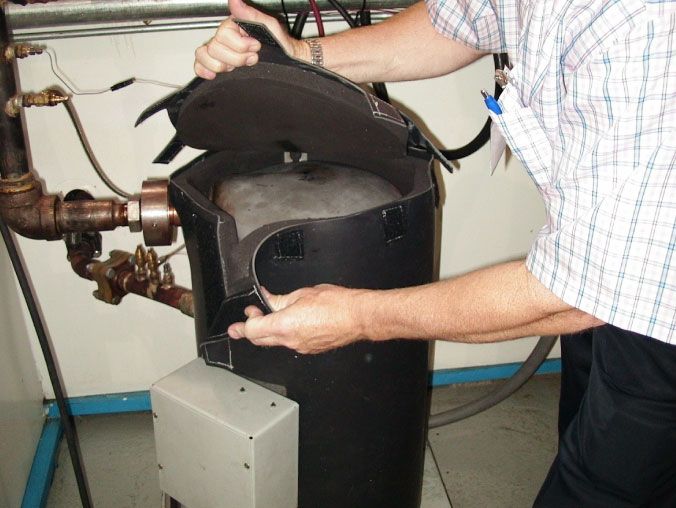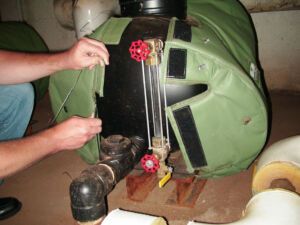Traditional insulation material consists of fiberglass, mineral wool, foam glass, cellular glass, and calcium silicate (i.e., aerogel). Along with these materials, facility owners and builders often use jacketing materials such as aluminum, stainless steel, and PVC.
But even when facility managers choose insulation material with a high R-Value and low K-Factor it’s no guarantee they’ll achieve energy conservation through insulation. That’s because facility owners and the installer of an insulation blanket may not be using best practices.
To consistently save energy and reduce greenhouse gas emissions, insulation material must stay on equipment and components. From the perspective of the facility worker, he or she must regularly inspect, service and sometimes repair equipment blanketed with insulation. All insulation material is removable, but it’s not always reusable. So, when a maintenance worker inspects, say, a control valve in a pressure reducing station the insulation must come off. If the insulation’s quality or design is poor, the maintenance worker won’t be able to easily return the insulation to the component he or she removed it from. And that, in turn, causes energy loss.
A conscientious facility manager may see the bare components and insulation piled up on the floor and ask a contractor to return and reinsulate these uncovered items. Making that happen assumes the insulation is in a condition to reinstall. Sometimes, contractors wrap components in a way that causes mechanics to tear through the insulation to make repairs. Asking a contractor to return requires a manager to make time for scheduling and, perhaps, escorting the contractor to the appropriate areas in a facility. The facility manager would need to develop a scope of work to ensure that the contractor targets all the uncovered areas. And there’s time required to walk through the facility to make sure the contractor successfully covered all the bare equipment and components.
A history of neglect
Facility managers are taxed with shouldering problems beyond lack of (or poorly made) insulation; they have production lines to run, hiring and scheduling challenges, and other to-dos they prioritize before energy conservation. Managers typically don’t see energy efficiency as a tangible benefit; to these managers, ensuring insulation is in place is a nuisance if they think about it at all.
From ‘known unknowns’ to ‘known knowns’
The American psychologists Luft and Ingham coined the phrase “known unknowns” in 1955 as part of an analysis called the Johari window. The phrase became part of pop culture when U.S. Secretary of Defense Donald Rumsfeld used it in 2002 to answer a question about Iraq. Known unknowns are worth mentioning because facility managers know insulation saves energy, but they often lack a compelling measure by which to understand the value. But what’s perceived by them as a known unknown is —to borrow another phrase from the Johari window – truly a known known. Here’s why: analyses show that, on average, it costs $300 to insulate each steam fitting on a system, and Shannon energy surveys combined with customer energy costs prove the annual savings from each insulation blanket ranges from $150 to $200 per year.
Knowing this, facility managers would then understand the importance of an investment in a reusable insulation blanket designed specifically for the intended application and manufactured according to standards and specifications tested by organizations like ASTM, ISO and UL. Facility managers would also stop turning to traditional, or conventional, insulation that’s applied again and again because it either:
- can’t be reused,
- falls apart due to shoddy workmanship, or
- lacks design standards and specifications.
Even if an insulation blanket seems to be reusable, it’s worth investigating the fit. For instance, a common problem Shannon sees in the field are gaps in how the insulation blanket conforms to a component—gaps cause heat to escape. Another issue is non-permanent fasteners that workers can’t reuse to put insulation back in place once removed. These issues diminish the efficiency of the facility and contribute to an increase in GHG.
Purchasing a low-quality, poorly designed insulation solution ultimately has a trash can as its destination. Combine that knowledge with the fact that a facility manager who buys a Shannon insulation blanket gets an ROI in about 24 months, and you have a valuable known known.


